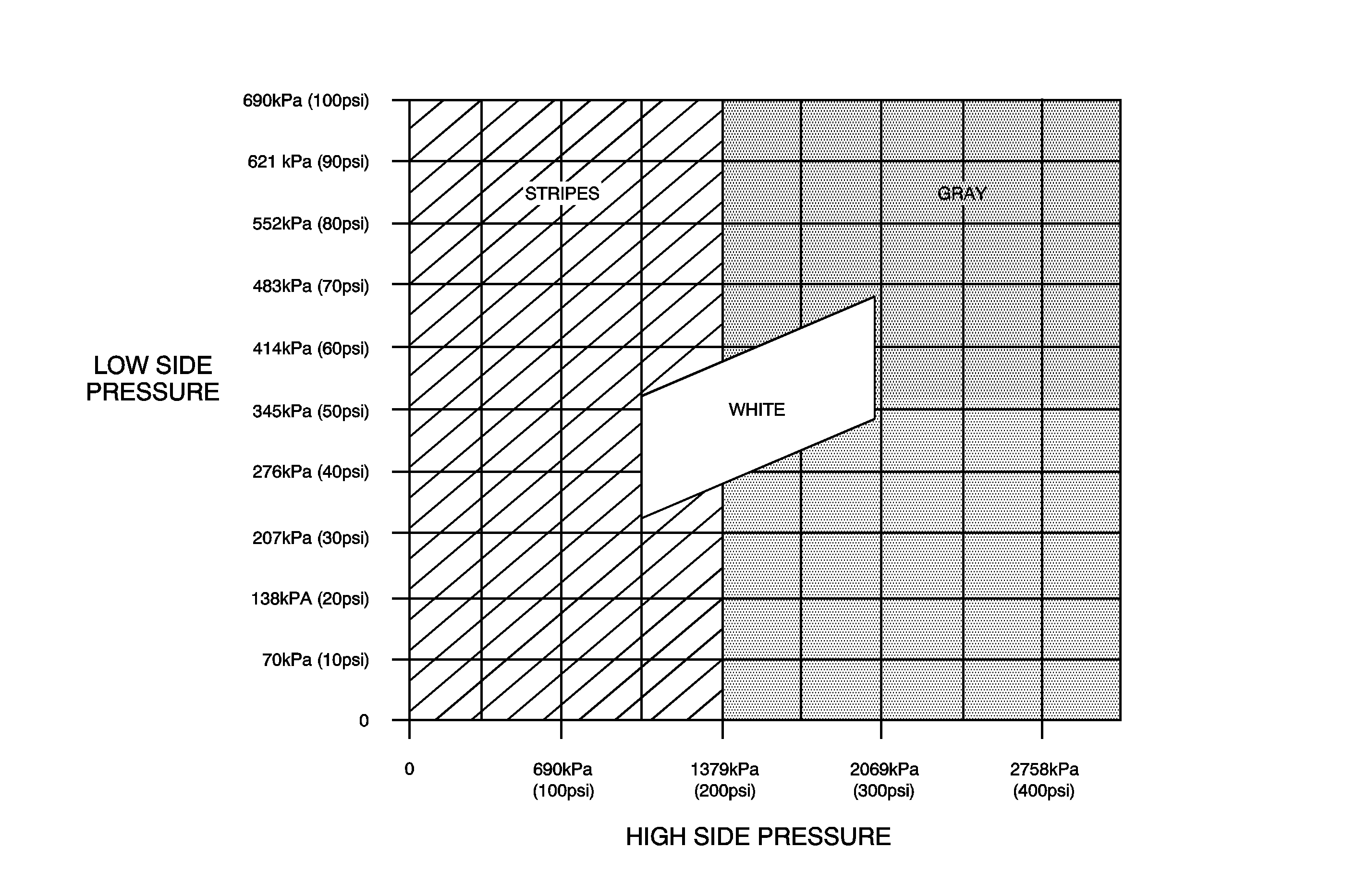Test Results | Related Symptoms | Probable Cause | Remedy | ||||
|---|---|---|---|---|---|---|---|
Discharge, high, pressure abnormally high | After stopping the compressor, the pressure drops about 299 kPa (43 psi) quickly, then falls gradually. | There is air in the system. | Recover, evacuate, and recharge the system with the specified amount of refrigerant. | ||||
The condenser is excessively hot. | There is excessive refrigerant in the system. | Recover, evacuate, and recharge the system with the specified amount of refrigerant. | |||||
Reduced or no air flow through the condenser. | The condenser or the radiator fins are clogged. | Clean the condenser or the radiator fins. | |||||
The condenser or the radiator fan is not working properly. |
| ||||||
Line to the condenser is excessively hot. | Restricted flow of refrigerant in the system | Locate and repair the restriction. | |||||
Discharge, high, pressure abnormally low | The condenser is not hot. | Insufficient refrigerant in the system. |
| ||||
High and low pressures are balanced soon after stopping the compressor. Low side pressure is higher than normal. | Faulty compressor pressure relief valve. | Repair or replace the compressor. | |||||
Faulty compressor seal. | |||||||
The outlet of the expansion valve is not frosted, low pressure gage indicates vacuum. | Faulty expansion valve | Replace the expansion valve. | |||||
Moisture in the system | Recover, evacuate, and recharge the system. | ||||||
Suction pressure abnormally low | The condenser is not hot. | Insufficient refrigerant in the system | Repair the leaks. Recover, evacuate, and recharge the system. | ||||
The expansion valve is not frosted and the low pressure line is not cold. Low pressure gage indicates a vacuum. | Frozen expansion valve | Replace the expansion valve. | |||||
Faulty expansion valve | |||||||
Discharge temperature is low and the air flow from the vents is restricted. | The evaporator is frozen. | Clear the restricted evaporator case drain. | |||||
The receiver-drier outlet is cool and the inlet is warm. | The receiver-drier is clogged. | Replace the receiver-drier. | |||||
Suction pressure abnormally high | The low pressure hose and check joint are cooler than the temperature around the evaporator. | The expansion valve is opened for too long. | Replace the expansion valve. | ||||
A capillary tube is loose. | |||||||
The suction pressure is lowered when the condenser is cooled by water. | There is excessive refrigerant in the system. | Recover, evacuate, and recharge the system. | |||||
The high and low pressure are equalized as soon as the compressor is stopped and both gauges fluctuate while the compressor is running. | A gasket is faulty. | Repair or replace the compressor. | |||||
The high pressure valve is faulty. | |||||||
Foreign particles are stuck in the high pressure valve. | |||||||
Suction and discharge pressure abnormally high | There is reduced airflow through the condenser. | The condenser or the radiator fins are clogged. | Clean the condenser and the radiator. | ||||
The radiator cooling fans are not working properly. |
| ||||||
The condenser is excessively hot. | There is excessive refrigerant in the system. | Recover, evacuate, and recharge the system. | |||||
Suction and discharge pressure abnormally low | The low pressure hose and metal end areas are cooler than the evaporator. | There is a clogged or kinked low pressure hose. | Repair or replace the low pressure hose. | ||||
The temperature around the expansion valve is low compared to that around the receiver/drier. | The high pressure line is clogged. | Repair or replace the high pressure line. | |||||
Refrigerant leaks | The compressor clutch is dirty. | The compressor shaft seal is leaking. | Repair or replace the compressor. | ||||
The compressor bolts are dirty. | Leaking around a compressor housing bolt | Tighten the bolts or replace the compressor. | |||||
The compressor gasket is wet with oil. | The compressor gasket is leaking. | Repair or replace the compressor. |
Low-Side and High-Side Pressure Relationship Chart

